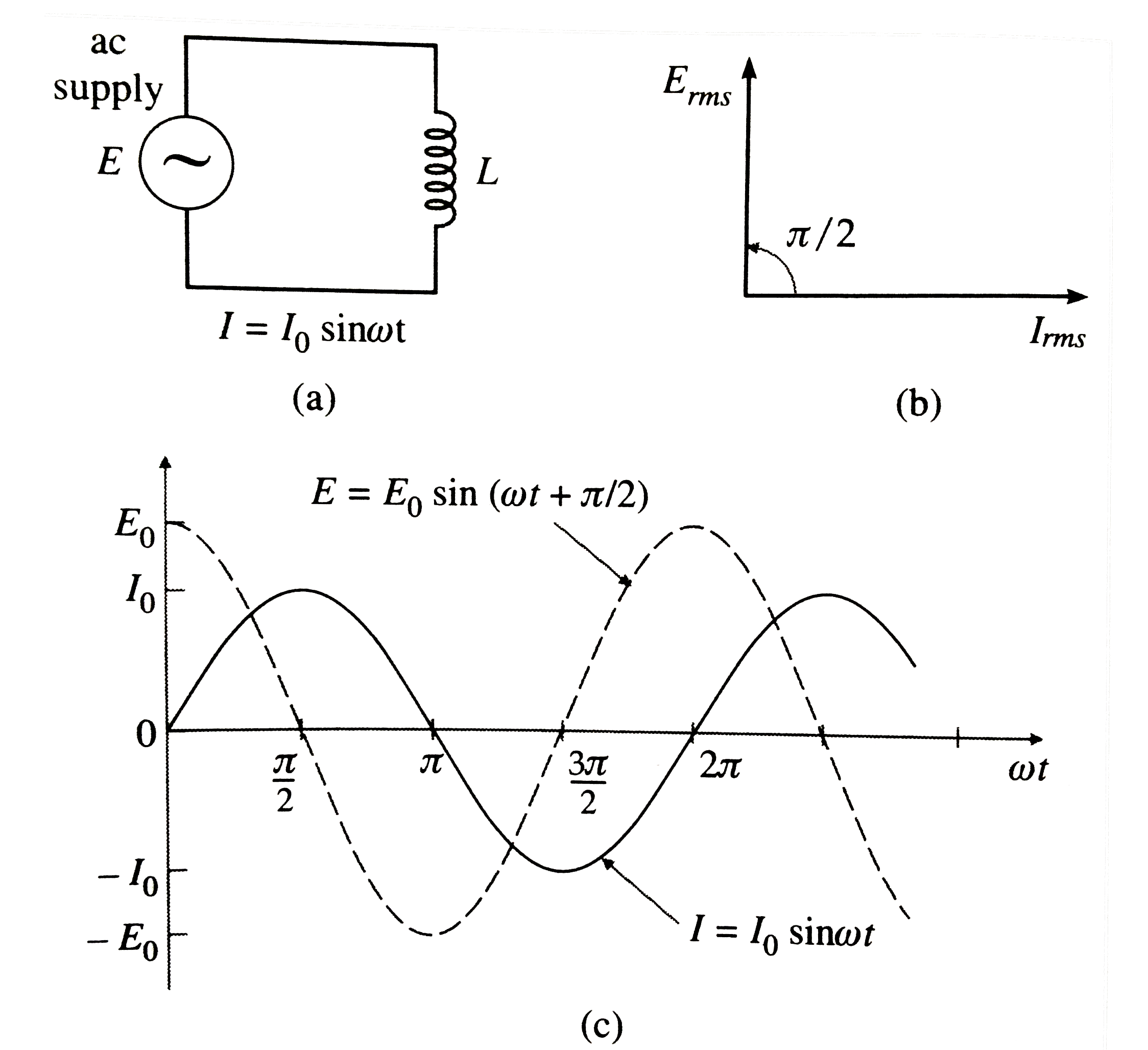What is meant by self-inductance of a coil? Obtain an expression for the self-inductance of a long solenoid.
Video Solution
Text Solution
Suppose a sinusoidally alternating emf is applied to a pure inductor of large self-inductance L. Let the current in the inductor be
I=I0sinωt …(1)
Where I0 is the peak current and frequency, f=ω/2π.
By Faraday-Lenz's law, the back emf (Eback) induced in the coil is
Eback=−LdIdt(I0sinωt) ...(2)
∴Eback=−ωLI0cosωt=−ωLI0sin(ωt+π2) ...(3)
Now, assuming the resistance of the coil to be negligible, Kirchhoff's voltage law applied around the closed circuit gives
E+Eback=0
∴ The applied emf, E=−Eback
=ωLI0sin(ωt+π2) ...(4)
That is, the applied emf must at every instant be (almost) equal and opposite to the back emf to maintain the alternating current.
The current and the applied emf are thus 90∘ out of phase (they are said to be in quadrature), and the emf leads the current (or the current lags behind the emf). This is shown in the phasor diagram, Fig. (b).
The peak emf from Eq. (4) is
E0=ωLI0 ...(5)
∴E0I0=ωL ...(6)

The quantity ωL is known as the inductive reactance of the coil and has the same dimensions as resistance. It is denoted by XL,
and represents the resistance offered by the inductor to the alternating current through it.
Since E0=√2ErmsandI0=√2Irms, from Eq. (6)
we get,
XL=ωL=ErmsIrms ...(8)
The inductive reactance is defined as the ratio of the rms value of the emf across the inductor to the rms value of the current in it.
SI unit : The ohm (Ω).
|
Topper's Solved these Questions
- DERIVATIONS-IIBook:NAVNEET PUBLICATION - MAHARASHTRA BOARDChapter:DERIVATIONS-IIExercise:Atoms, Molecules and Nuclei
Explore 7 Videos
- DERIVATIONS-IIBook:NAVNEET PUBLICATION - MAHARASHTRA BOARDChapter:DERIVATIONS-IIExercise:Semiconductors
Explore 1 Video
- DERIVATIONS-IIBook:NAVNEET PUBLICATION - MAHARASHTRA BOARDChapter:DERIVATIONS-IIExercise:Magnetism
Explore 1 Video
- DERIVATIONS-IBook:NAVNEET PUBLICATION - MAHARASHTRA BOARDChapter:DERIVATIONS-IExercise:Assignments
Explore 9 Videos
- DISTINGUISH BETWEENBook:NAVNEET PUBLICATION - MAHARASHTRA BOARDChapter:DISTINGUISH BETWEENExercise:Assingment
Explore 3 Videos
Similar Questions
Knowledge Check
The unit of self inductance of a coil is
AFaradBHenryCWeberDTeslaThe self inductance of a coil is a measure of
Aelectrical inertiaBelectrical frictionCinduced emf and the magnetic fluxDinduced currentSelf induction of a solenoid is
ADirectly proportional to current flowing through the coilBDirectly proportional to its lengthCDirectly proportional to area of cross-sectionDInversely proportional to area of cross-section
Define self-inductance. Write its SI unit. Derive an expression for self-inductance of a long, aircored solenoid of length l, cross-sectional area A (radius r), and having N number of turns.
View SolutionDefine self -inductance and its S.I. unit. Derive an expression for self- industance of a long, air-cored solenoid of length , radius r, and having N number of turns.
View SolutionSelf-inductance of a solenoid depend on-
View SolutionThe coefficient of self inductance of a coil is
View SolutionSelf inductance of a coil is independent of
View Solution

